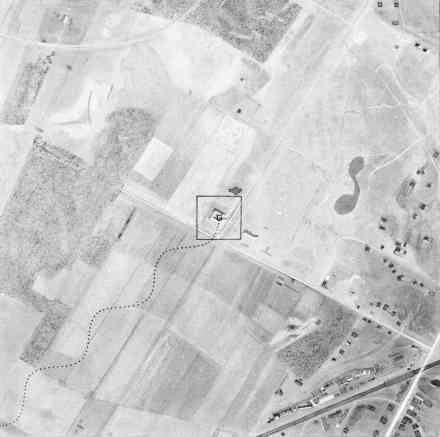| Cosmic View: The Universe in 40 Jumps by Kees Boeke (1957) |
page 9 |
|
| TOP Flaps 1 2 3 4 5 6 7 8 9 10 11 12 13 14 15 16 17 18 19 20 21 22 23 24 25 26 27 28 29 30 31 32 33 34 35 36 37 38 39 40 41 42 43 44 45 46 47 48 |
| Powers of ten: 1 2 3 4 5 6 7 8 9 10 11 12 13 14 15 16 17 18 19 20 21 22 23 24 25 26 27 <> 1 0 -1 -2 -3 -4 -5 -6 -7 -8 -9 -10 -11 -12 -13 |
 | |||
| 4. |
It is surprising that already in this fourth illustration the child, who filled the
greater part of the first picture, has completely disappeared. The reason, as we
said in the introduction, is that each time we jumped upward, we had to go ten
times higher than we were, in order to produce an image at a scale one-tenth
that of the one before. If we viewed the little girl from a height of, say, 5 meters
in picture 1, we had of necessity risen to 50 meters td see #2, to 500 meters
for #3, and now we look down from a height of 5000 meters. That is higher
than Mont Blanc, Europe's highest mountain! No wonder that the huge whale
can now hardly be distinguished. We notice a strange wavy line reaching the
school building. We wonder what that is. The next drawing will show.
| ||
|
This content is from Kees Boeke's book, Cosmic View: The Universe
in 40 Jumps. It has been placed online without permission. Copyright (C) 1957 by Kees Boeke. All rights reserved. No part of this book may be reprinted, or reproduced or utilized in any form or by any electronic, mechanical or other means, now known or hereafter invented, including photo-copying and recording, or in any information storage and retrieval system, without permission. |